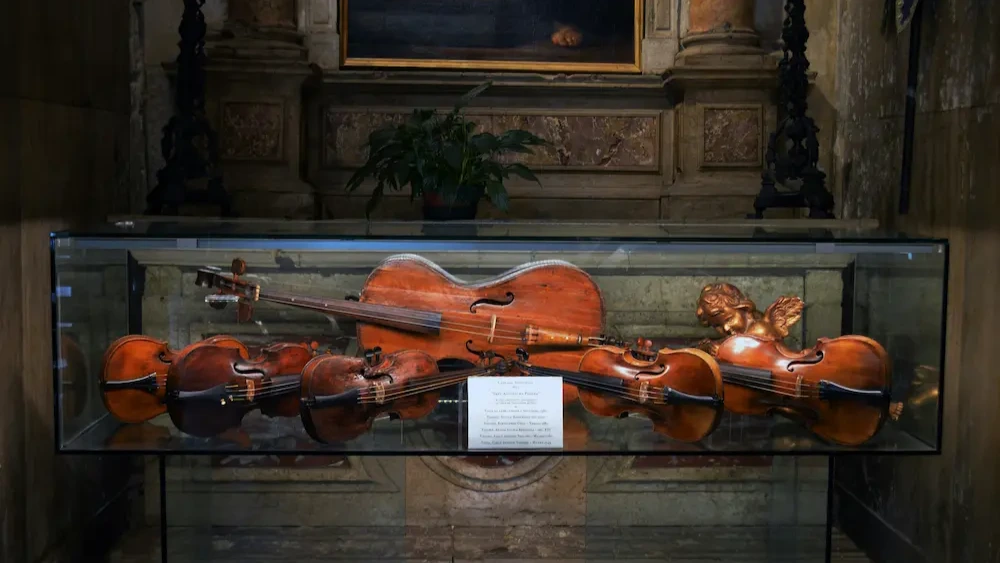What is the real difference between a violin & a viola?

When I tell people that my instrument is the viola (as opposed to the violin), they often respond with some of these common guesses as to what the difference between the two would be:
- Is it technically different from a violin because it has 5-strings rather than 4?
- Is it a viola because my lowest note is C3 and not G3?
- Does the viola play lower notes & accompaniment parts, whereas the violin plays the main melodies?
These question inspire interesting research into the history of these instruments. It also asks the question "what is a violin" and if there is any meaning to differentiating them.
1. On the number of strings
5-string electric violins are actually increasingly common (sometimes up to 7, exceeding the range of a cello).
(Image caption: Jordan 9-string electric violin. Still not a viola 😉)
In the realm of acoustic under-chin instruments, there is the lovely viola d'amore with 6-7 bowed strings. However, it's very different because it has 6-14 sympathetic strings under the bridge that you don't ever touch with the bow. (Kind of like the sitar!). That's a lot of strings to spend money on. 😬
(Image caption: Viola d'amore, an acoustic historical instrument)
Basically, the number of strings are usually non-standard in the past, but due to acoustic volume reasons, 4-string acoustic instruments became the most popular. Now that we have amplification, we can gravitate back to having extended ranges on both violins & violas, as we see on guitars and basses.
2. On the lowest note of the instrument
(Image caption: String instrument ranges (extended range for double bass))
When learning music in schools or universities, students are taught that a violin's lowest note is G3 (image above), therefore the melodic lines & harmonies below it must be delegated to larger instruments of the family such as violas, celli and double basses.
In the real world of 2-5 piece band gigs, there isn't actually much budget or space on stage/mixer to have a violin and a cellist, when you have to make sure the singer, guitarist, bassist and drummer has to get paid!
So as a string player, i eventually invested in an octaver; which is an effect pedal that clones your sound but an octave lower. The result is what sounds like a cello!
(Image caption: I've been using this octaver for over 7 years. It even works on chords!)
Eventually, i wanted to reach the double bass range... so i bought 2 and put them one after the other. But i realized there's a latency between the acoustic sound and the double-octaved sound. So in the end, i bought POG 2 and I've been using that to play the part of a bassist in smaller groups.
(Image caption: POG2 takes up more space and the sliders are quite fragile, but it's really popular even among electric bassists.)
With the combination of these technologies, I'm able to play the whole range of the string section. Of course, it cannot achieve the polyphony & counterpoint of 4 brains moving their melodies in different direction and rhythms. With creative use of delay & reverbs, it's possible to create some amount of polyphony.